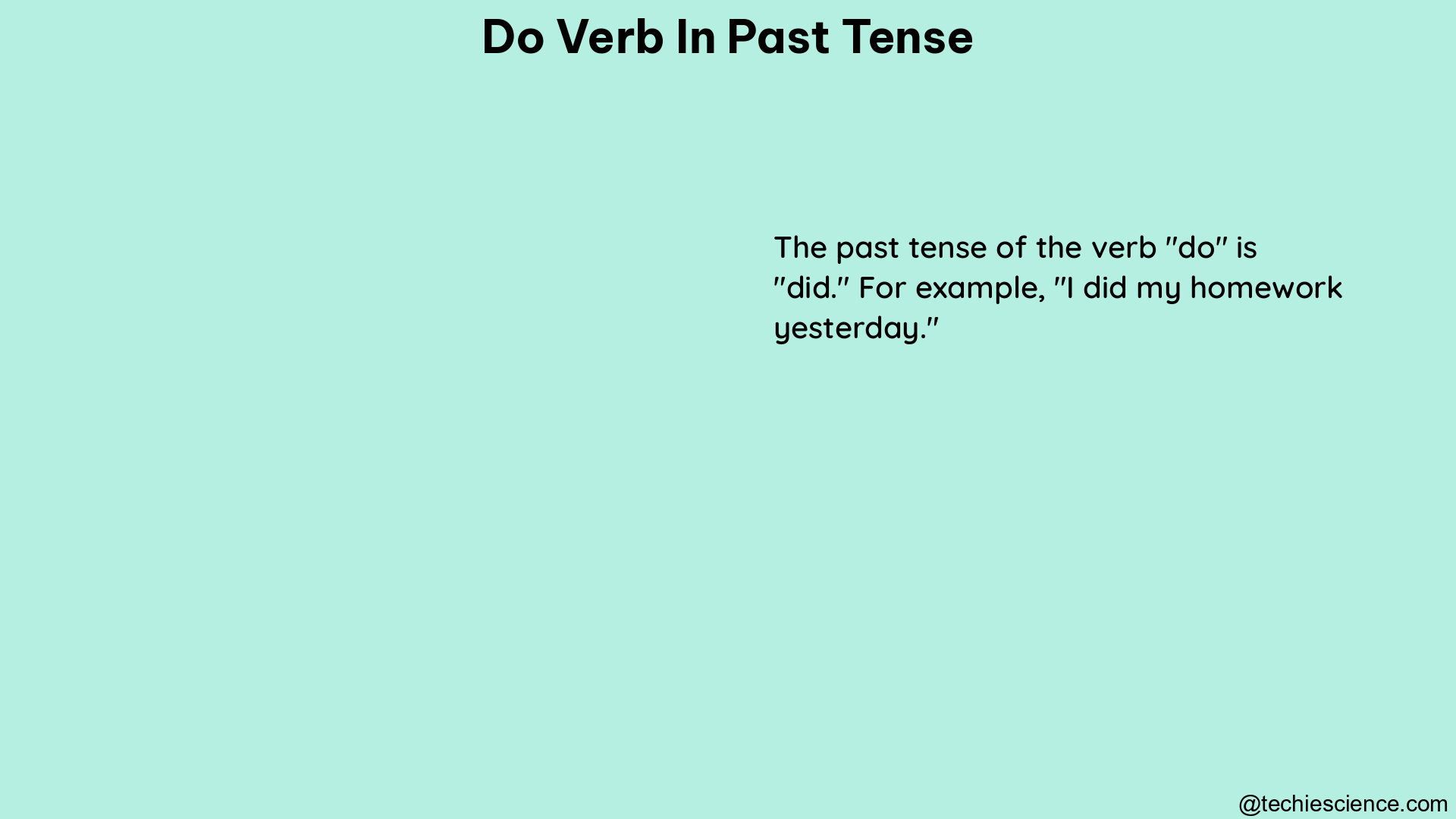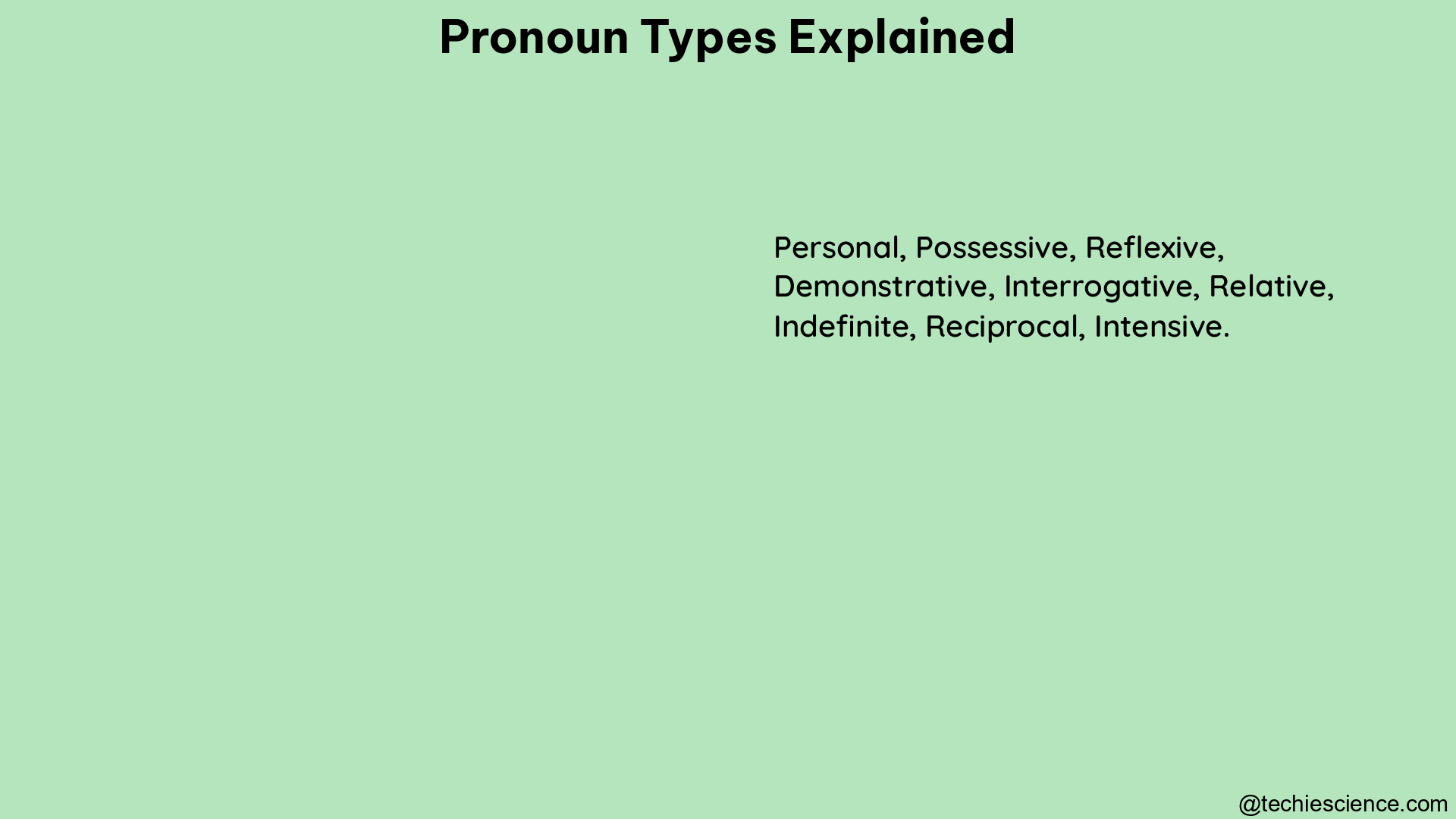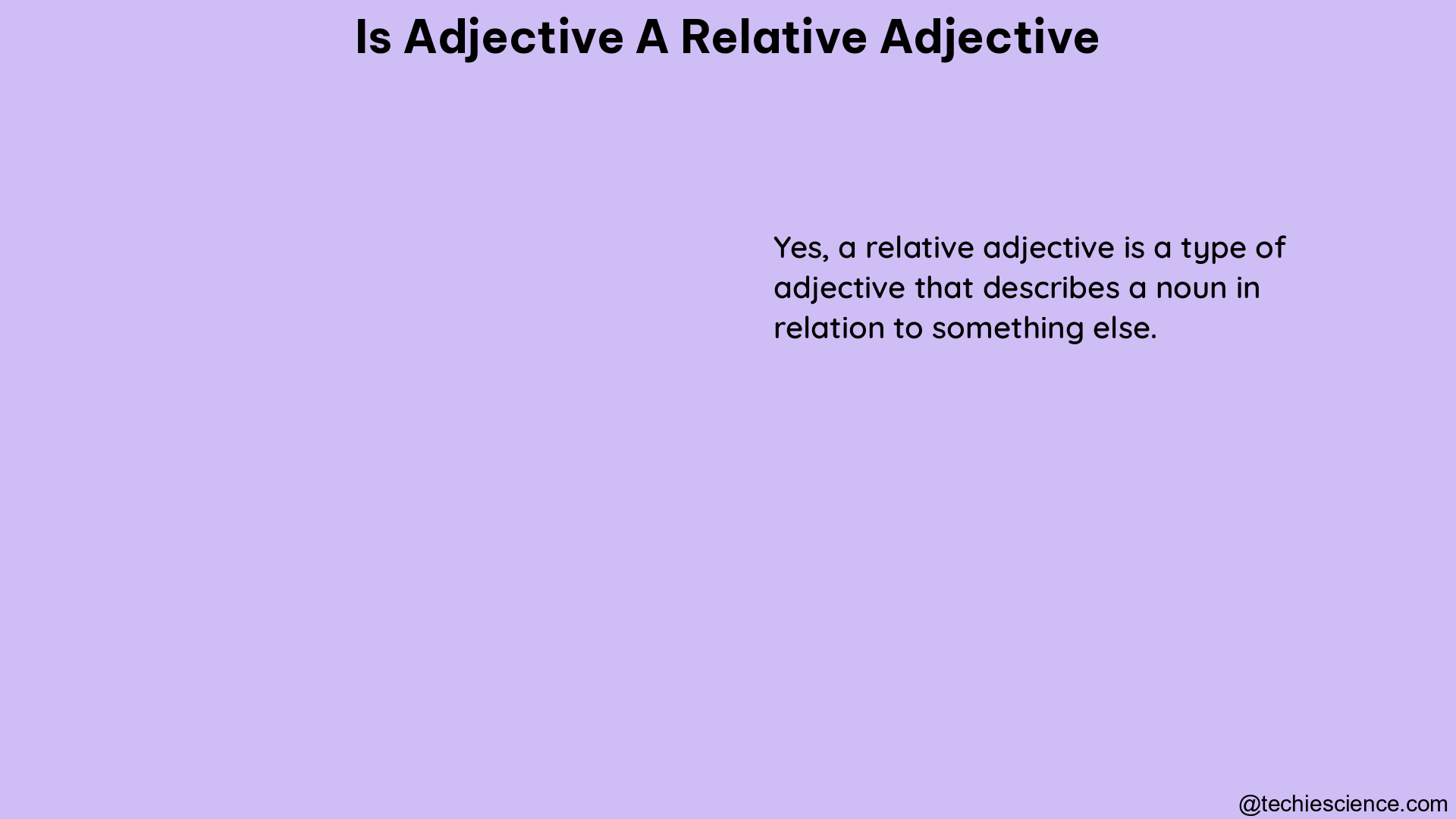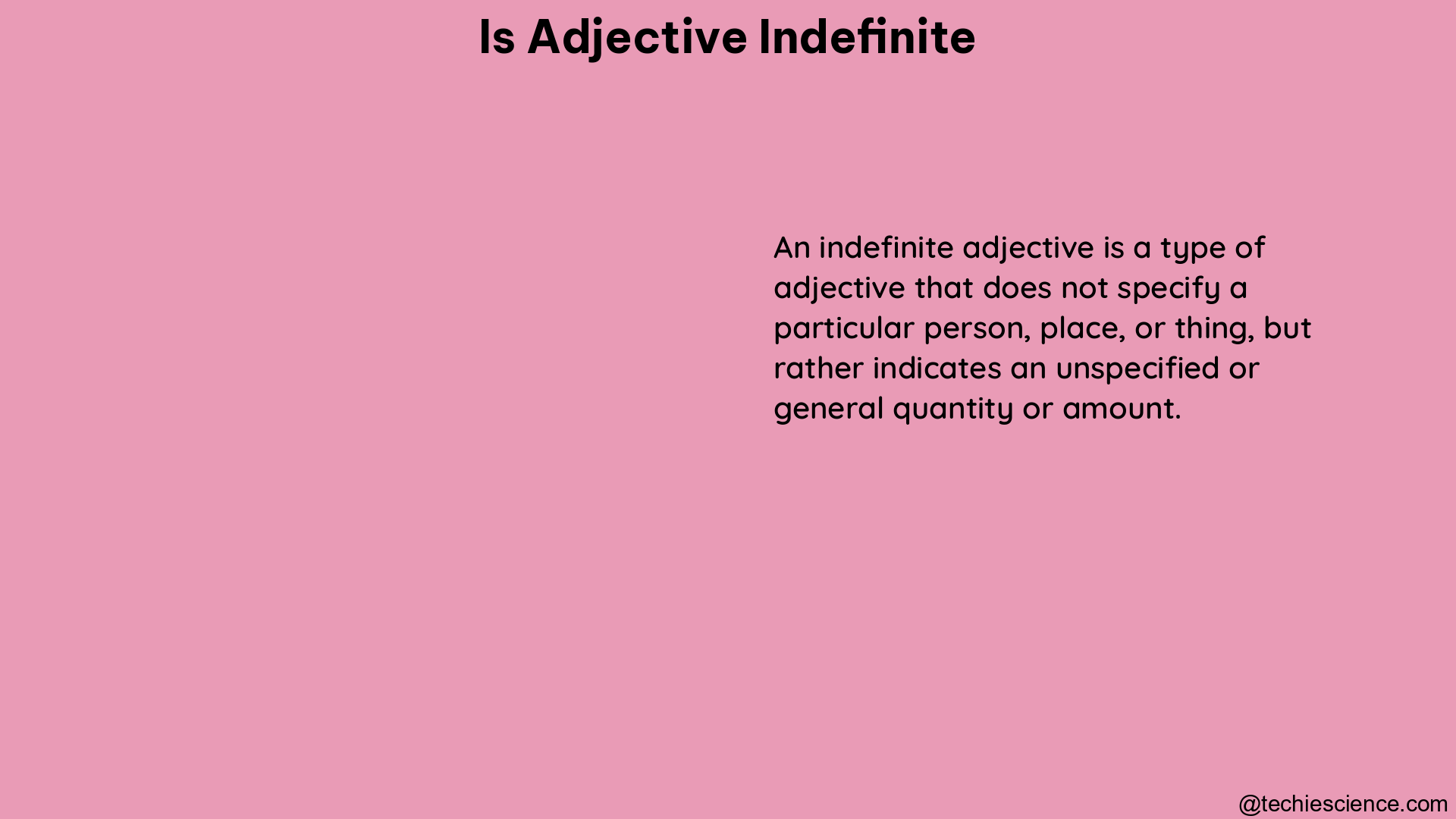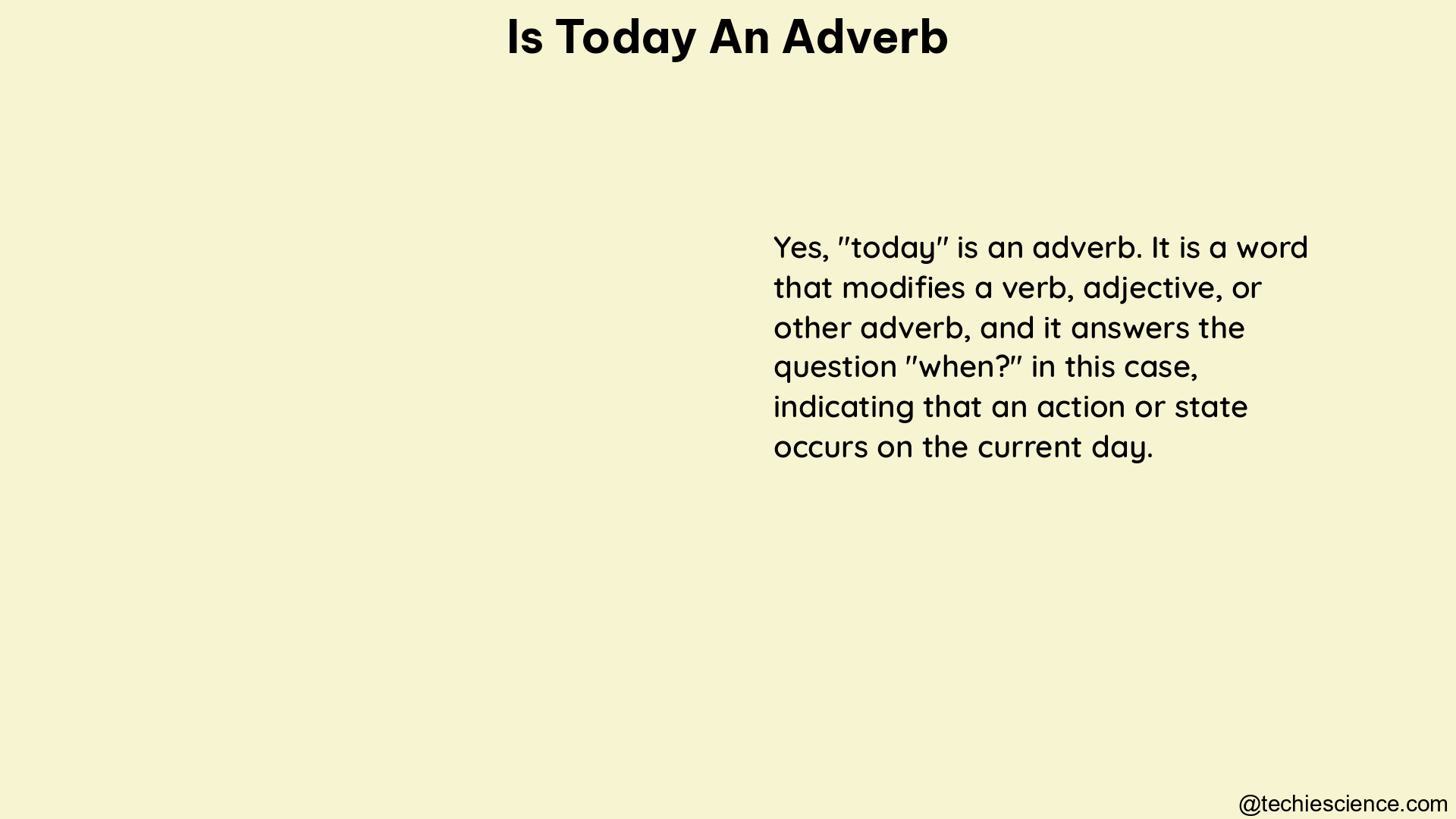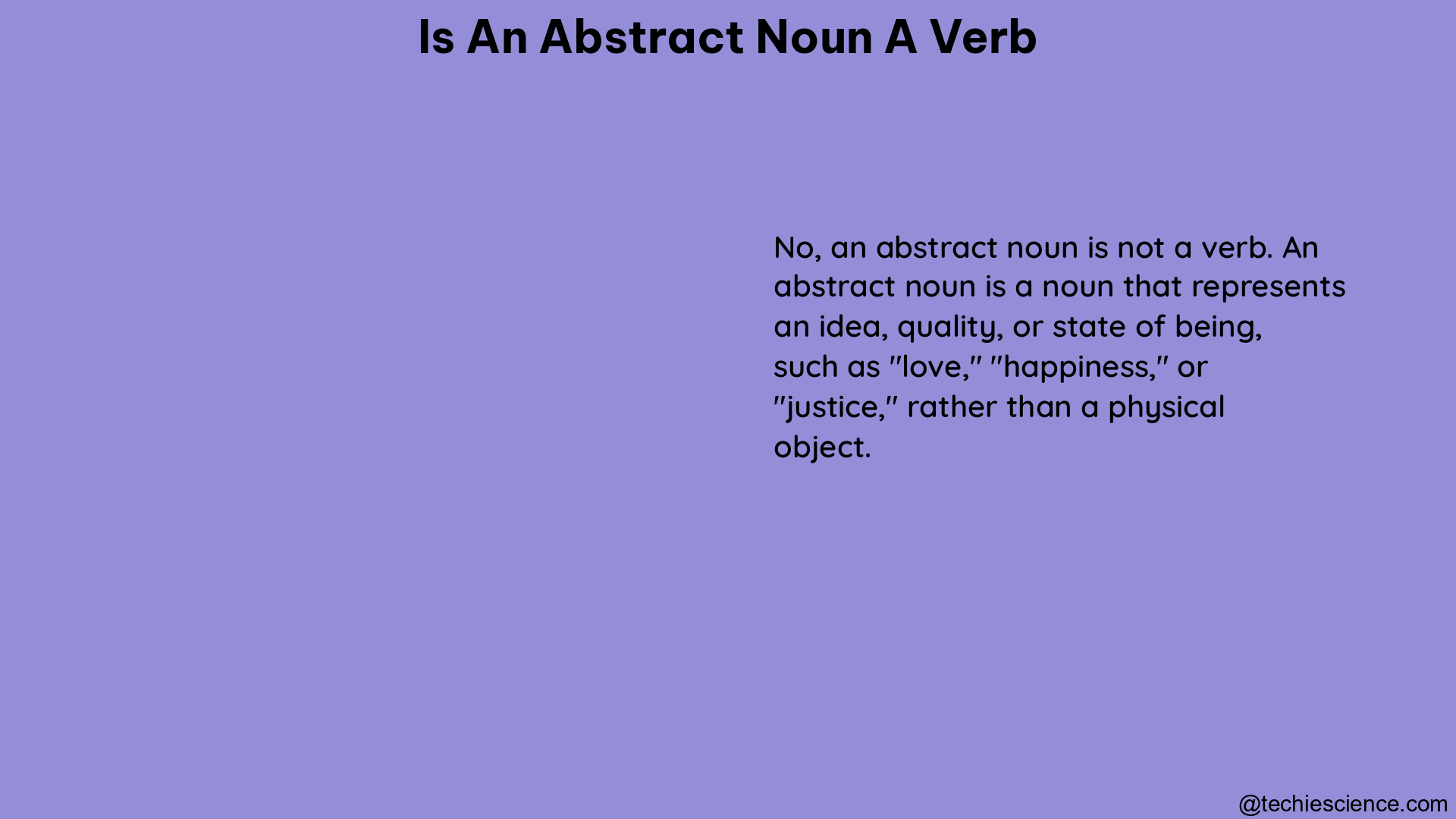Indefinite adjectives are a crucial part of the English language, allowing us to describe nouns in a non-specific, general way. These adjectives provide a broad, unspecified quality, quantity, or identity to the nouns they modify, rather than a precise or definitive description. Understanding the proper use and nuances of indefinite adjectives is essential for effective communication and writing.
Definition and Types of Indefinite Adjectives
Indefinite adjectives are used to modify nouns by expressing an unspecified or general quality, quantity, or number. Some of the most common indefinite adjectives include:
- Some: “She bought some flowers for the party.”
- Any: “Do you have any suggestions?”
- Several: “I saw several birds in the park.”
- Few: “There are only a few seats left.”
- Many: “There are many books on the shelf.”
- Much: “He has much experience in that field.”
- Most: “Most people enjoy traveling.”
- All: “All students should attend the meeting.”
- Each: “Each student received a certificate.”
- Every: “Every child loves ice cream.”
- No: “There is no milk in the fridge.”
- Another: “Can I have another piece of cake?”
- Other: “We need to find another solution.”
- Various: “The store offers various products.”
- Certain: “I have a certain feeling about this situation.”
Non-Specificity and Quantity
The defining characteristic of indefinite adjectives is their non-specificity. They do not provide exact quantities, qualities, or identities of the nouns they modify. For example:
- “Some books” (referring to an unspecified number of books)
- “Many people” (referring to an unspecified large number of people)
This non-specificity allows indefinite adjectives to be used to make general statements or describe broad categories of nouns.
Generalization and Plural Agreement
Indefinite adjectives are often used to make general statements or describe a broad category of nouns. They typically agree with plural nouns, as they are used to express non-specific quantities or qualities. For instance:
- “All dogs are loyal.”
- “Some students enjoy studying.”
- “Several houses” (plural noun)
- “Many cars” (plural noun)
Use in Questions and Comparative Forms
Indefinite adjectives are commonly used in questions to inquire about non-specific information or possibilities. Additionally, some indefinite adjectives have comparative forms to compare non-specific quantities. Examples include:
- “Do you have any questions?”
- “Are there any other options?”
- “More,” “less,” “most,” “fewer”
Importance and Distinction from Indefinite Pronouns
Indefinite adjectives play a crucial role in expressing non-specific information and making general statements about nouns. It is important to distinguish them from indefinite pronouns, which stand alone and do not modify nouns or pronouns. For example:
- “There are several people in the safe room.” (Indefinite adjective modifying “people”)
- “There are several in the safe room.” (Indefinite pronoun standing alone)
Examples and Real-Life Usage
Indefinite adjectives are used in a wide range of contexts, including:
- “I liked most people at the party.”
- “Some mice have chewed the cables.”
- “There are several reasons for my resignation.”
- “Each team will receive a 2-minute warning before the start.”
Key Points and Guidelines
- Use “less” with singular nouns and “fewer” with plural nouns.
- If you spill less cheese, you’ll attract fewer mice.
- Write “all the things” instead of “all of the things.”
- Use “their” instead of “his/her” when referring to a person who could be male or female.
Conclusion
Indefinite adjectives are a fundamental part of the English language, allowing us to express non-specific information and make general statements about nouns. By understanding the definition, types, and proper usage of indefinite adjectives, you can enhance your communication skills and write more effectively. This comprehensive guide has provided you with the necessary knowledge and examples to master the use of indefinite adjectives in your everyday writing and speech.
References:
– ieltsonlinetests.com – Indefinite Adjective definition, usages and examples
– grammar-monster.com – Indefinite Adjectives: Explanation and Examples
– geeksforgeeks.org – List and Examples of Indefinite Adjectives
